Best Natural History Museums in the US Worth Visiting
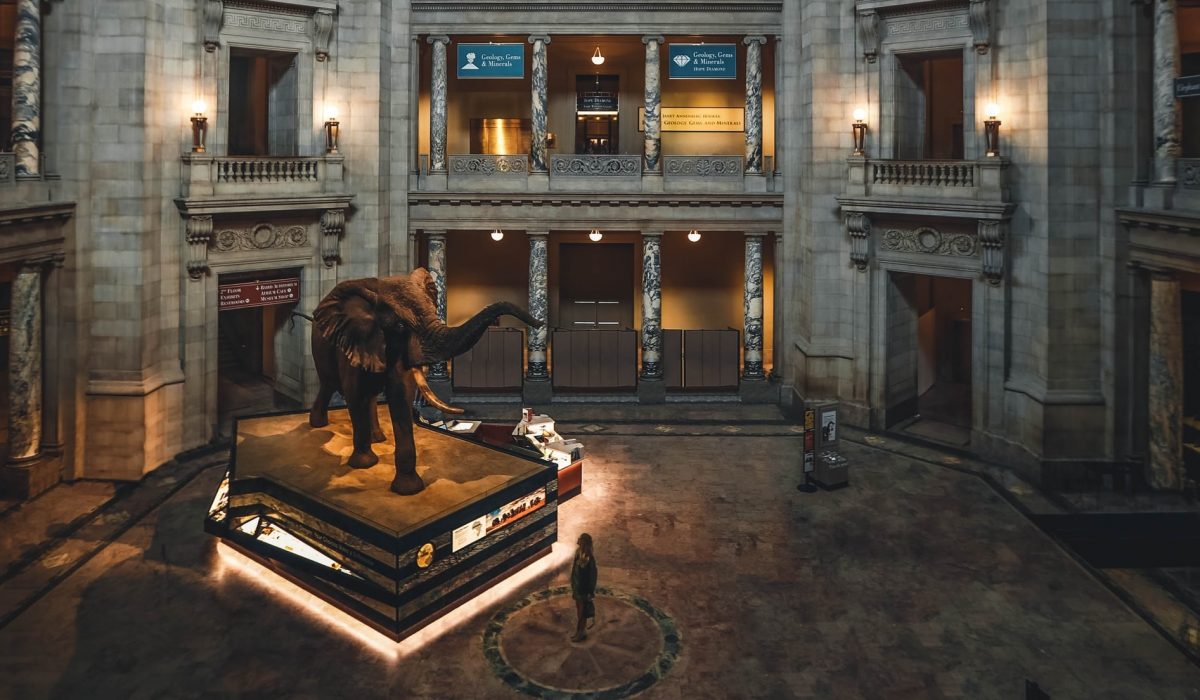
Standing face to face with some of the largest prehistoric fossils in the world is an experience you can only find at the best natural history museums in the US. Showcasing plants and animals, living and extinct, people of all ages will expand their knowledge of all magnificent forms of life on the planet. These are 10 of the best natural history museums in the US that are worth visiting.
1. National Museum of Natural History
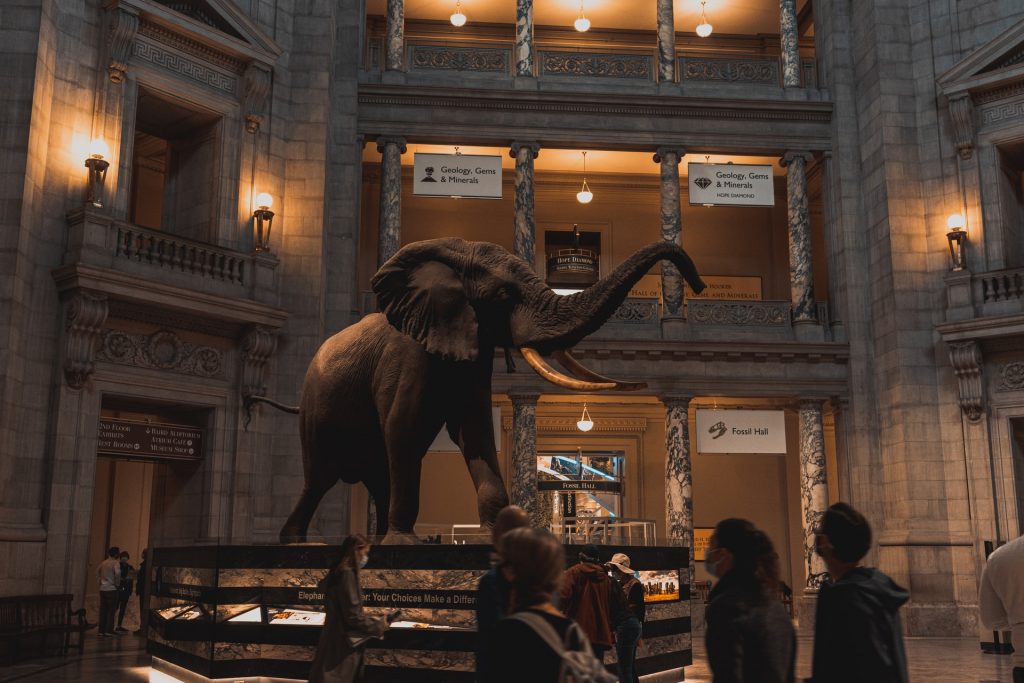
Photo by J. Amill Santiago on Unsplash
A less than 10-min ride from Georgetown, the National Museum of Natural History is one of the best natural history museums in the US and in the world. The entrance opens with a three-story tall T-Rex skeleton which is one of many giant prehistoric fossils to be observed. It is located on the National mall in Washington D.C. and includes over 145 million holdings in total. An exhibit that allows you to trace our ancestral human lineage from the origin of our species to the present day is the Hall of Human Origins.
Specimens also include 75 replica skulls and an interactive family tree following six million years of evolution. The Dinosaur Hall of Paleobiology also includes over 570,000 cataloged reptiles and continues to collect specimens. The Triceratops exhibit reveals the first accurate dinosaur skeleton in virtual motion by using digital technology. The summer months are the busiest but include extended hours from 10 AM to 7:30 PM and include free admission.
2. American Museum of Natural History
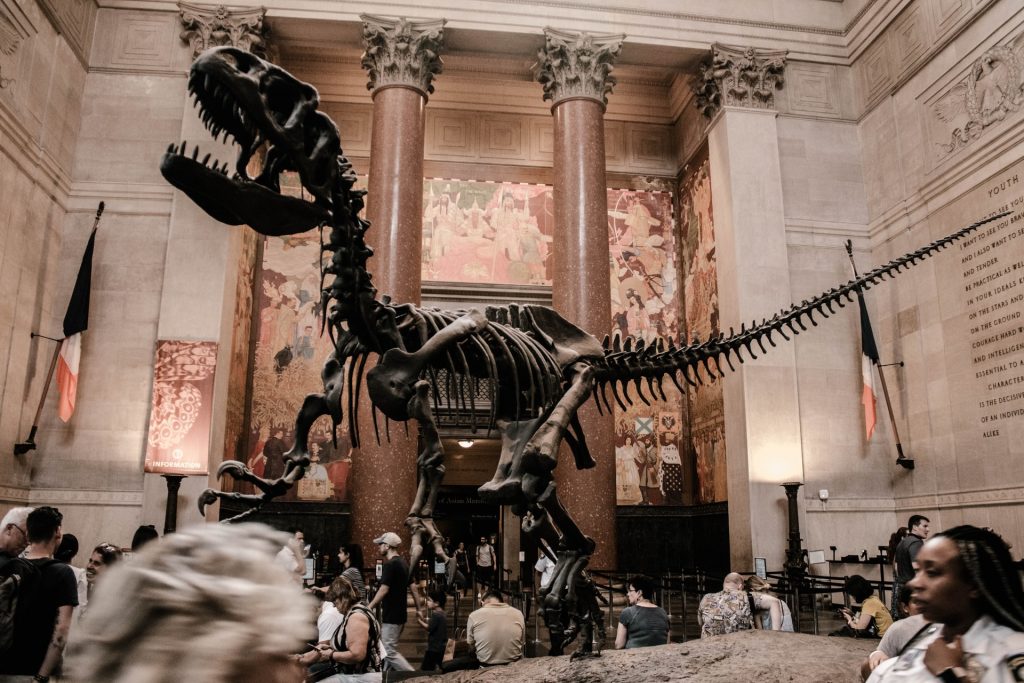
Photo by Aditya Vyas on Unsplash
The largest natural history museum in the world is the American Museum of Natural History; located on the Upper West Side of Manhattan, New York City. Probably the best stop to keep warm when you visit Manhattan during the winter, the museum spans four blocks with dozens of exhibits to check out. Inside the museum, you’ll find incredible displays from the 94-foot long blue whale, a Whooly Mammoth, Barosaurus and Allosaurus skeletons, a 122-foot Titanosaur skeleton, 45 permanent exhibition halls, a planetarium, and a library. One exhibit includes a 34-ton section of the Cape York meteorite; the largest meteorite on display at any museum in the world. Also, many films have been shot at this museum including K-PAX and Night at the Museum.
Additionally, the museum has five active research divisions supporting nearly 200 scientists. Their work contributes to more than 33 million specimens and artifacts. This also includes a specialized collection of frozen tissue and genomic data. Every year the museum provides special exhibits like the annual Butterfly Conservatory. The museum is free of charge with requested donations. However, there’s an additional charge for the Space Show in the Hayden Planetarium.
3. Natural History Museum of Los Angeles County
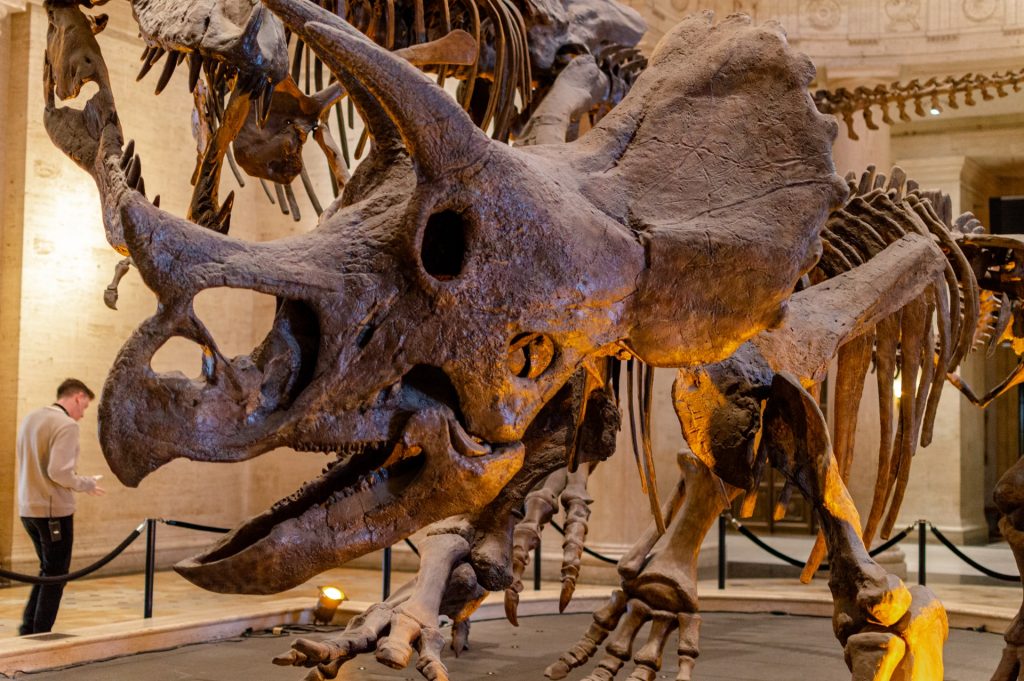
Photo by Crisoforo Gaspar Fernandez
Located in the heart of Los Angeles, California is one of the world’s largest and most important repositories of natural and cultural history. The Natural History Museum of Los Angeles County plays a critical role in inner-city science and nature education. It holds nearly 35 million specimens and objects. The museum is also one of L.A.’s oldest cultural institutions with exhibits such as the Age of Mammals, the Dinosaur Hall, the Gem and Mineral Hall, and the collection of dioramas. Along with sharing the history of the planet, the museum explores the transformation of the local environment with the outdoor Nature Gardens and the Nature Lab making connections between the environment and the people of L.A. Millions of plant and animal fossils have been excavated from La Brea Tar Pits. This then tells the story of the Los Angeles Basin over the past 50,000 years.
4. Field Museum of Natural History
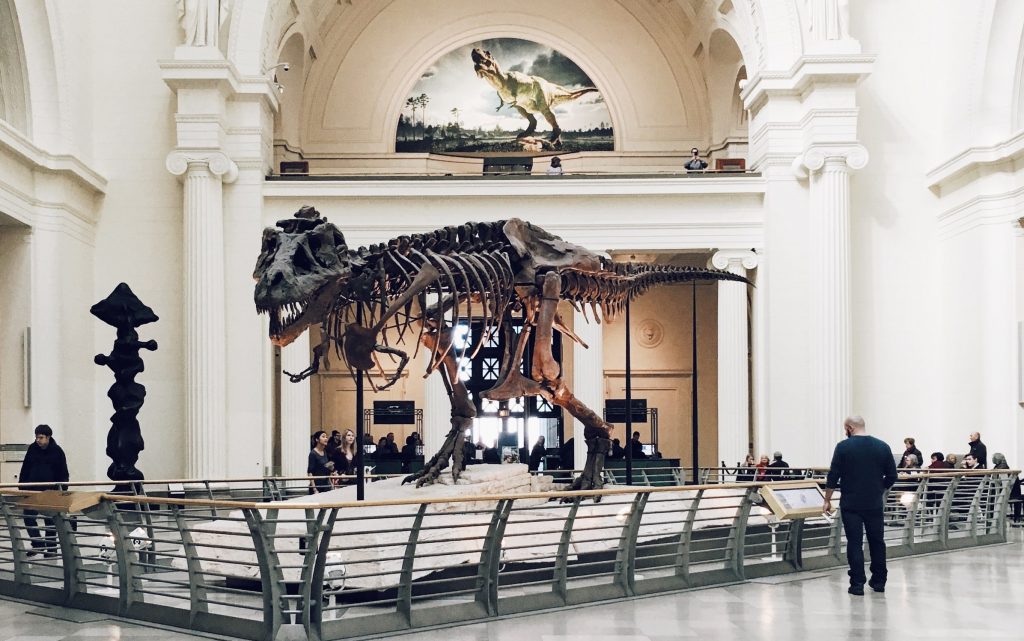
Photo by Chris Nguyen on Unsplash
Getting around Chicago, it is impossible not to come across The Field Museum, one of the largest natural history museums in the US and in the world. It maintains the status of premier natural history through the size and quality of its educational and scientific programs. The exhibits range from the oldest fossils to past and current cultures around the world. Interactive programming here also demonstrates today’s urgency for conservation needs. The museum is named after its first major benefactor being the department store magnate Marshal Field.
Over 24 million specimens and objects provide the basis for the museum’s scientific research. The collections include extensive amounts of existing biodiversity, gems, meteorites, fossils, and rich anthropological collections from around the planet. The collections originated from the 1983 World’s Columbian Exposition and its artifacts displayed.
5. Carnegie Museum of Natural History
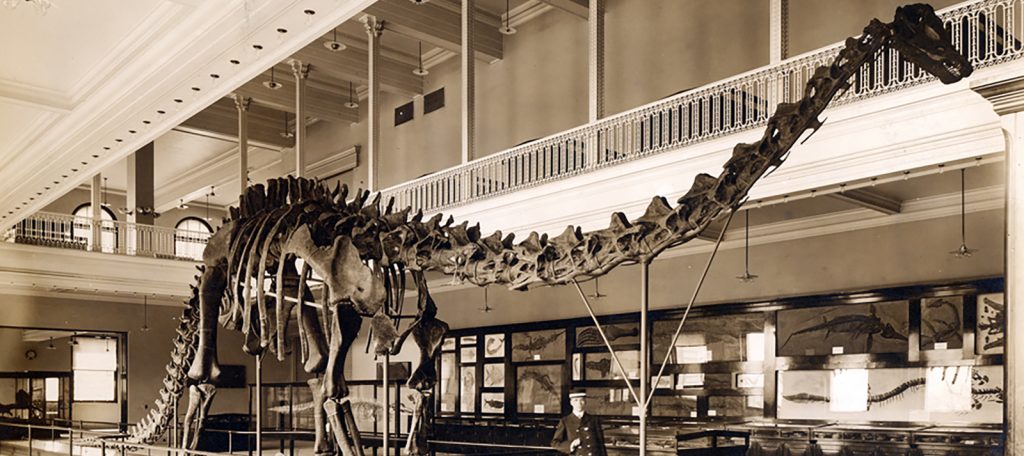
Photo from the Carnegie Museum of Natural History Official Website
One of the attractions in Pittsburgh you shouldn’t miss is the Carnegie Museum of Natural History. The museum gained recognition in 1899 when scientists unearthed the fossils of Diplodocus Carnegie. It includes the world’s largest collection of Jurassic dinosaurs in its “Dinosaurs in Their Time” exhibition; the third largest collection of mounted displayed dinosaurs in the United States.
Additionally, the museum includes one of the world’s only fossils of a juvenile Apatosaurus which is the world’s first specimen of a Tyrannosaurus Rex. Research teams include former Carnegie scientists who made critical discoveries like the Puijila darwini, the Castorocauda lutrasimilis, and Hadrocodium wui. Other departments work collaboratively with strategic centers of research including Anthropology, Birds, Botany, Paleontology, Mammals, Mollusks, and Vertebrate Paleontology.
6. Denver Museum of Nature and Science
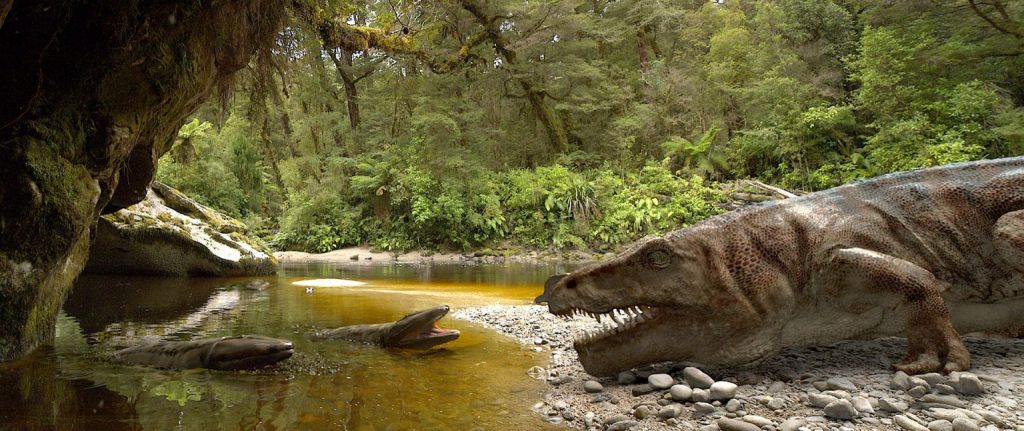
Photo from the Denver Museum of Nature and Science Official Website
The Denver Museum of Nature and Science is a primary resource for science education in the Rocky Mountain region. Considered one of the best natural history museums in the US, it includes a variety of exhibits and programs teaching about the natural history of Colorado and more. It is a non-profit institution housing more than 1,800 volunteers and 350 full-time employees. Over a million objects are on display including natural history and anthropological materials. Among its permanent exhibits are “Egyptian Mummies” containing two mummies as well as several coffins and other antiques.
Also, a current special exhibit titled Extreme Sports focuses on the environments in which extreme athletes perform incredible feats. Visitors experience these sports through profiles of international athletes giving hands-on activities showcasing the science, creativity, and innovation behind each extreme sport. Also, more than 300,000 students visit the museum in school groups each year. They learn from the exhibits along with IMAZ films, lectures, and classes pertaining to various fields of natural science.
7. Academy of Natural Sciences of Drexel University
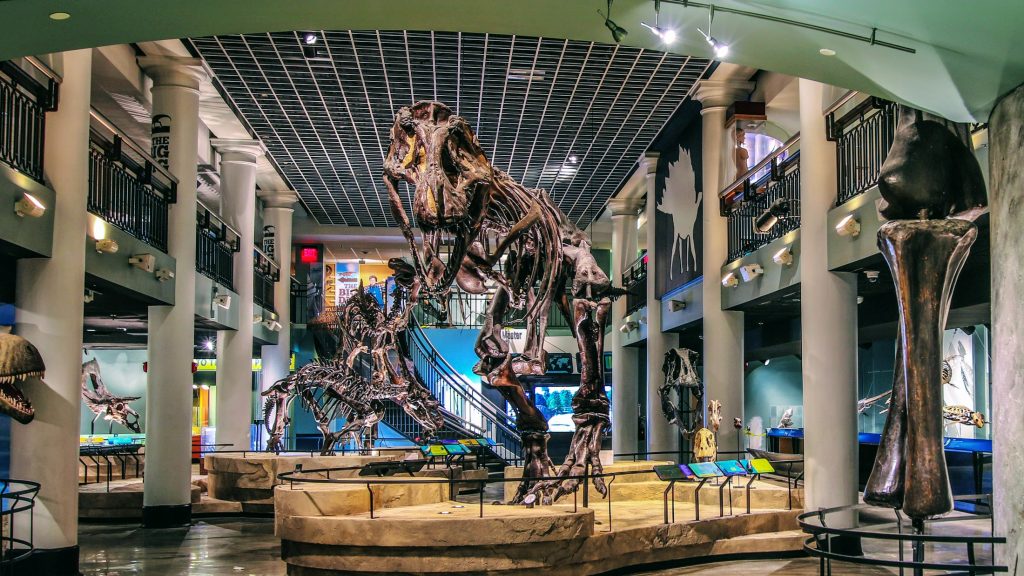
Photo from the Visit Philadelphia Website
One of the oldest natural history museums in the world and the oldest natural science research institute and museum in the western hemisphere is the Academy of Natural Sciences of Drexel University. This history museum was formerly known as the Academy of Natural Sciences of Philadelphia founded in 1812. It has been in continuous operation since it opened and has sponsored many expeditions conducting original environmental and system research.
Amazingly, it contains more than 17 million specimens covered on four floors. This includes a fully constructed Tyrannosaurus rex within its Dinosaur Hall. The exhibit showcases over 30 dinosaur and Mesozoic reptile species including parts of Hadrosaurus foulkii fossils. Along with observing large dinosaur skeletons, there are also historic animal dioramas showcasing three continents of wildlife. You can also admire the butterflies in the tropical garden or dig for fossils while exploring the main exhibits. Additionally, rotating exhibits continue to bring in new specimens and have included frogs, crocodiles, bugs, and baby dinosaurs.
8. Houston Museum of Natural Science
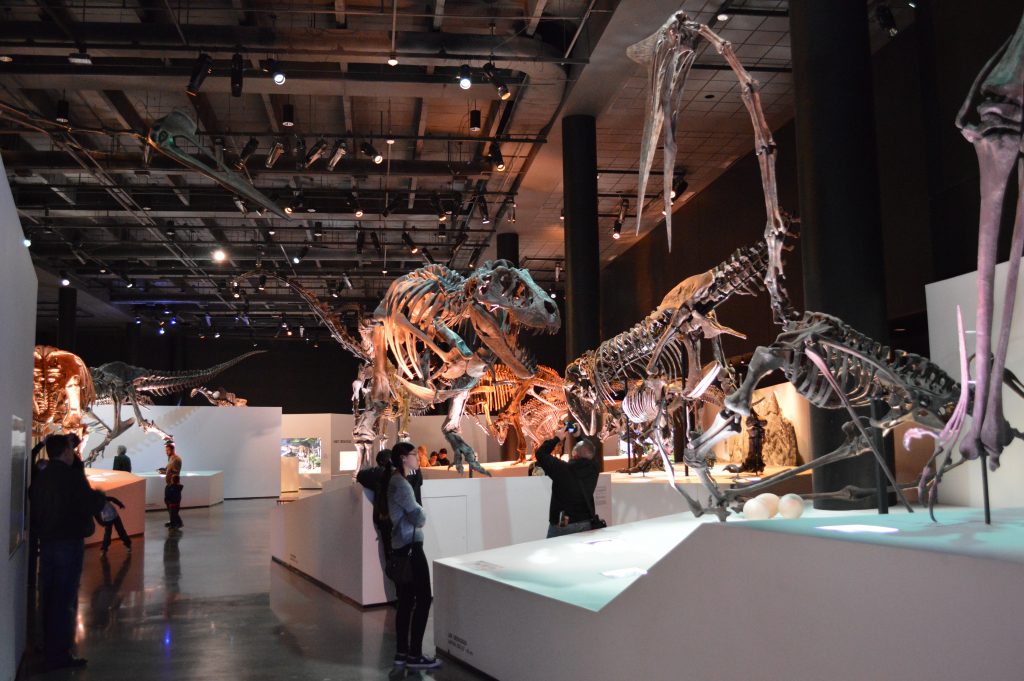
Photo from WikiCommons
One of the most popular natural history museums in the US gaining recognition for its large number of guest exhibits is the Houston Museum of Natural Science. It was established in 1909 by the Houston Museum and Scientific Society; with the goal of providing a free institution for those focusing on education and science. More than two million people visit each year and it also includes four floors of natural science halls and exhibits. There are lots of things you can do in Houston. Apart from the most popular museum, Space City is home to many beautiful architectural structures, amusement parks, and green spaces.
Additionally, the museum has 16 permanent exhibits, one of which is the Foucault pendulum. The Foucault pendulum demonstrates the Earth’s rotation with a pendulum over 60 feet long. The Cullen Hall of Gems & Minerals features over 750 crystallized mineral specimens and rare gemstones. Along with the exhibits is the Burke Baker Planetarium. It presents a range of science and astronomy, equipped with a Digistar 5 full-dome projection system. It also makes for one of the first 8k planetariums in the U.S.
9. New Mexico Museum of Natural History
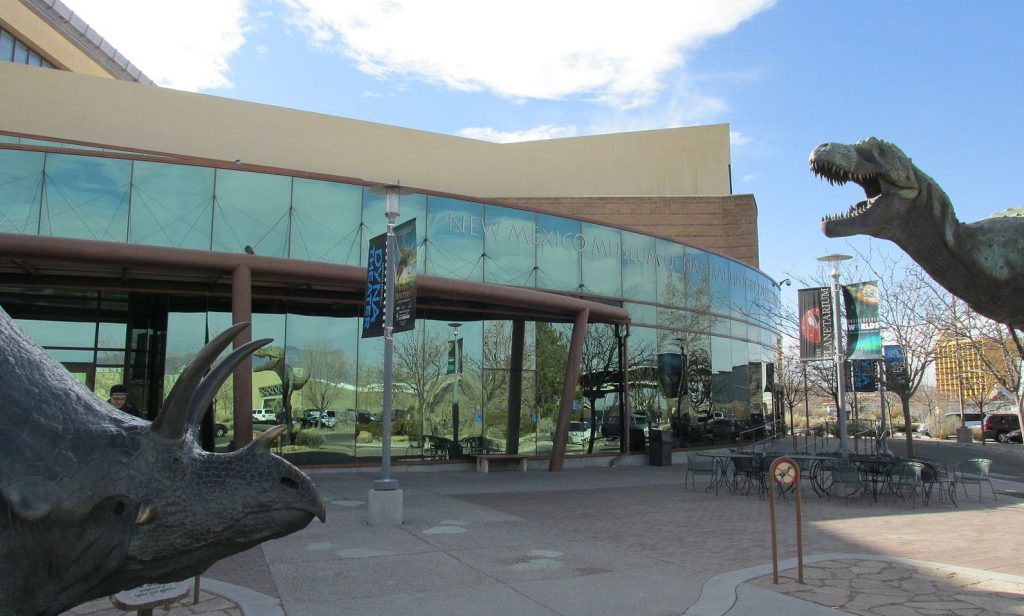
Photo from WikiCommons
Not far from Albuquerque’s beautiful Old Town Plaza is the New Mexico Museum of Natural History and Science. The museum is deemed one of the best natural history museums in the US as it takes you through New Mexico’s mast from the birth of the universe to the Ice Age. The Museum’s permanent exhibit halls are organized by time period. These include Origins, Dawn of the Dinosaurs, Age of Volcanoes, Cave Experience, and New Mexico’s Ice Age to name a few.
Also, the only Triassic hall in North America can be found with the dinosaur exhibit. The Fossilworks exhibit shows people the process of removing material from fossilized dinosaur bones. The Planetarium and Lockheed Martin DynaTheater are exciting compliments to the exhibits. Along with the floor of exhibits dedicated to astronomy and space exploration, there is also an observation deck with a large telescope.
10. University of Michigan Museum of Natural History
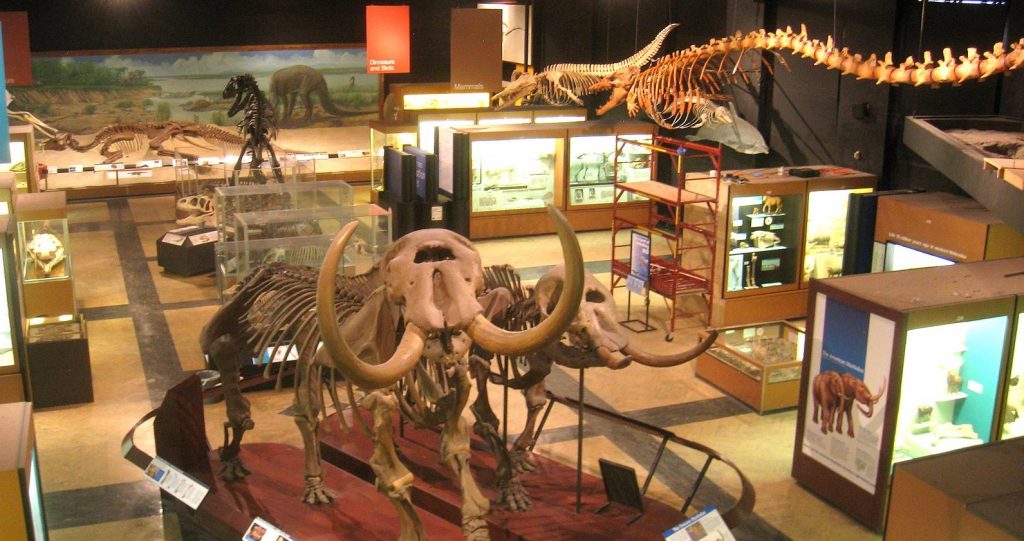
Photo from WikiCommons
Located in Ann Arbor, Michigan is another one of the best natural museums in the US, the University of Michigan National Museum Of Natural History. The museum opened in 1837 and features four permanent exhibitions. The Hall of Evolution is focused on evolution and prehistoric life. It showcases fossils, models, and dioramas of dinosaurs, ancient whales, and mastodons. The museum holds over 20 million objects which are either biological, anthropological, or archaeological.
The Michigan Wildlife Gallery also exhibits birds, mammals, reptiles, plants, and fungi native to the great lakes along with taxidermy specimens and displays about regional environmental issues. The newest interactive exhibits use state-of-the-art technology to view iconic specimens with much greater detail. The museum also has a planetarium featuring programs on weather, geology, and evolution; complimenting concepts learned in the hands-on exhibits.

